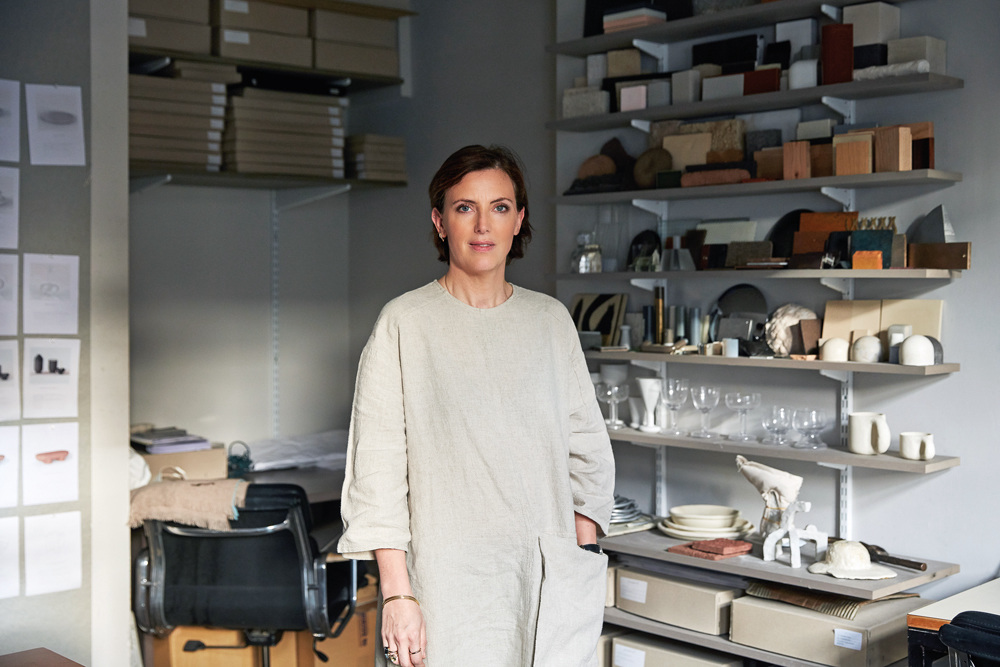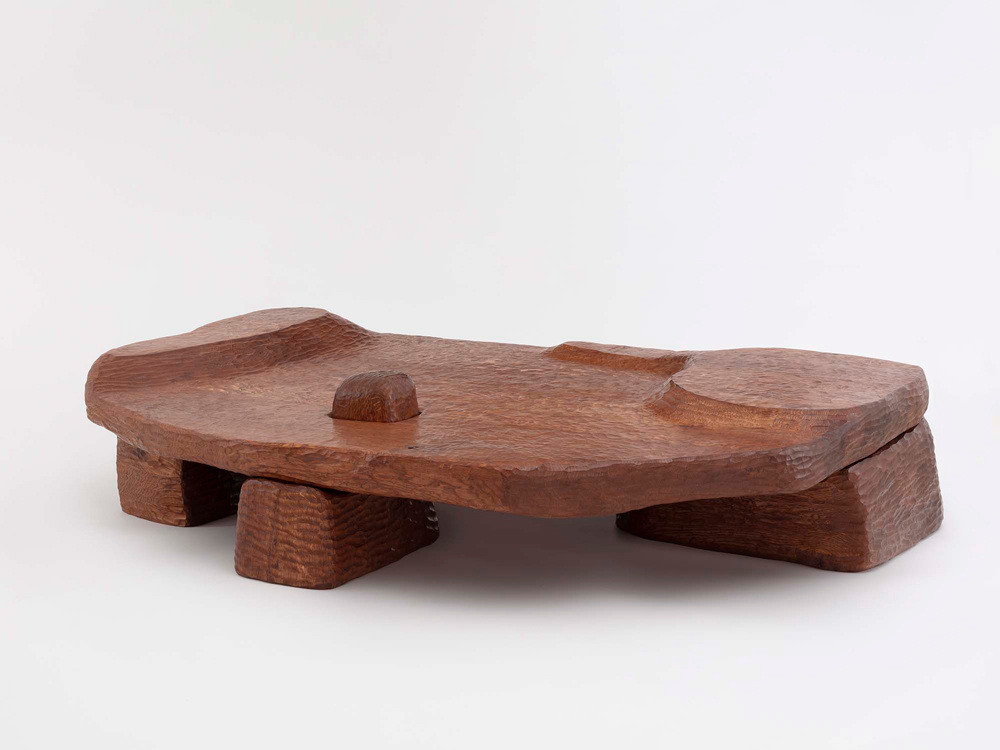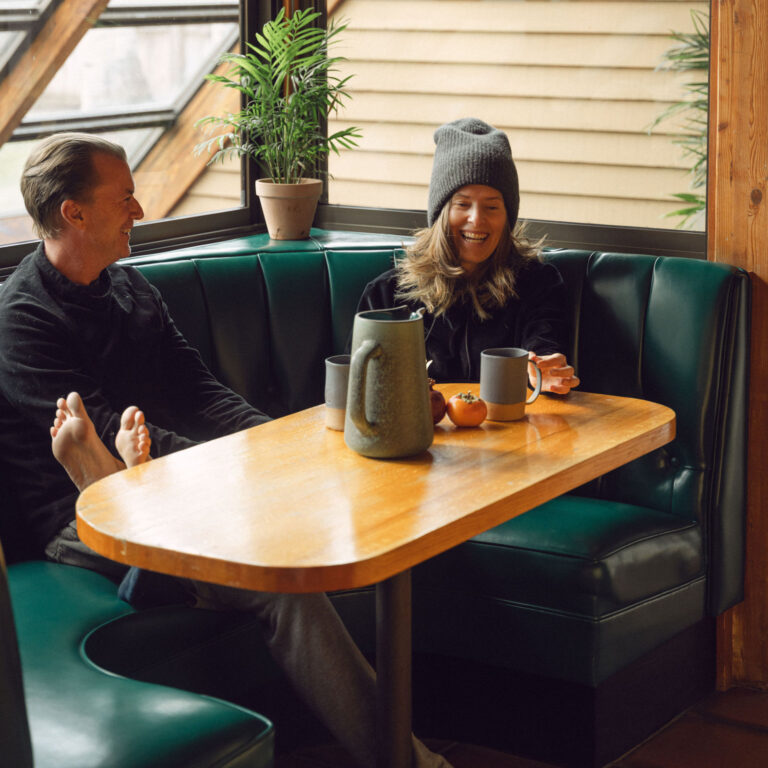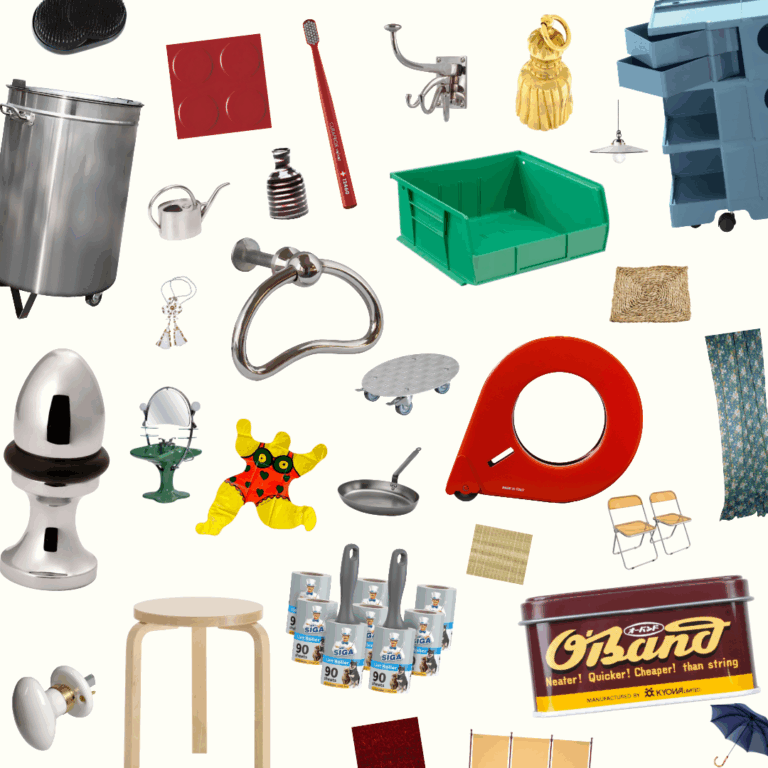With a deep-rooted interest in objects, space, and landscape; upbringing in the English countryside collecting sticks, stones, and glass; education as an art historian at the University of Bristol, and tenure as Interiors Editor for The World of Interiors, Faye Toogood is not like other designers. And she knows that. “As someone that feels like an outsider most of the time to the design, art, and fashion worlds, it was really unheard of to combine those,” says the mother of three. With her third solo show opening this fall in Los Angeles, a capsule clothing collection, and a monograph documenting her studio’s unconventional process, Toogood establishes that while her work might look and feel soft, there is mighty force within.

“My work is always heavy, I don’t know why,” Too good says, “Perhaps I associate that with strength.” It’s something that is very apparent in “Assemblage 7: Lost and Found,” her new exhibition at Friedman Benda, where objects are carved out from solid oak and Purbeck marble, a green fossiliferous stone usually found in cathedrals throughout the United Kingdom as load-bearing masonry. “It’s not a stone that’s been taken up in our everyday domestic objects and environments; it’s very much associated with ecclesiastical buildings,” she explains.
The artist grew up in Rutland in the East Midlands, and now lives close to the South Downs, where she has access to prehistoric stone sites, the inspiration for the new series. “This was more about revealing the pieces. I likened it to an archeological dig: there’s this shape waiting to come out, and it was my job to reveal the shape from the block,” she says. The new pieces are an exercise in basic, inherent shapes found in nature—a primitive approach, yet one that is meticulously hand carved and hammered. A low table in oak titled Plot II appears to have its top draped over its stumpy legs; the Pile stool, as its name suggests, is made of two interlocking wood pieces; and Cairn is a sturdy armchair named after a pile of stones used as a marker. The objects Toogood produces show the trace of their process, something she’s become even more attuned to after baring it all with “Assemblage 6: Unlearning,” in which she presented life-size maquettes in cast bronze and aluminum made to look like cardboard and wire.
Likewise, her new book is a crafted object in itself. Titled Drawing, Sculpture, Landscape, Materials, it traces the designer’s series of six assemblages—from “Supernatural” in 2010 to “Unlearning” a decade later—her retail and interior design projects, and her clothing collections designed with her patternmaker sister, Erica. Faye was against the standard coffee-table “glossy catalog” so, rather than printing her unmistakable fan-favorite Roly-Poly chair on its cover, (“I almost feel like she walks into the room before I do,” she says. “It’s quite hard to divorce myself from that chair!”), the spine-less book features a painting by its creator that was screen-printed on gray board. The title refers to the pillars that hold Toogood Studio together. “It’s been really freeing for me, and it allowed us to open up the archive. I keep everything, and have kept a lot over the years,” she says. Essays by design curators Glenn Adamson, Sarah Schleuning, and the book’s editor, Alistair O’Neill, accompany the publication, and gather comprehensively from all the elements of Toogood’s life and career thus far.

As she moves through life and work’s chapters, Toogood’s appearance mutates. “When I had my first child and I first did Roly-Poly, I needed a uniform—I was only wearing white: I needed easy hair, everything was cut off and dyed white, which meant I could get up, get to work, and not think about it.” These days, she is embracing color, but only with hindsight will she understand why. “Perhaps it’s the result of coming out of lockdown."
As for fashion, Toogood has always followed gender neutrality as a principle, and is conscious of this throughout all aspects of her practice. “I have actually spent quite a lot of my life ignoring my gender or trying to put it to one side,” she says. When starting out in the male-dominated art and design fields, Toogood felt the need to assert her presence, and did so by choosing materials she thought would mirror her strength. “I used a lot of steel, a lot of welding,” she says. “I wasn’t working in any decorative arts at all—no ceramics, no textiles, nothing with surface patterns.” By “Assemblage 4” in 2014, she was going through her first pregnancy, and her work started to shift, ridding itself of sharp edges and introducing her iconic Roly-Poly in its creamy off-white fiber glass iteration. In “Assemblage 7,” Toogood is coming to terms with aging. She is also moving straight to model-making and skipping the drawing process altogether. Crossing her mediums for the first time, she has chosen to exhibit a selection of hand-printed and painted unisex clothing. “The world feels more ready for it in a way,” she says, and adds that doing it outside of Europe is much more freeing. “One of the things I love about America is that anything goes.”
“Assemblage 7: Lost and Found” is on view from October 7, 2022 to November 12, 2022, at Friedman Benda at 8260 Marmont Lane Los Angeles, California 90069.










 in your life?
in your life?

